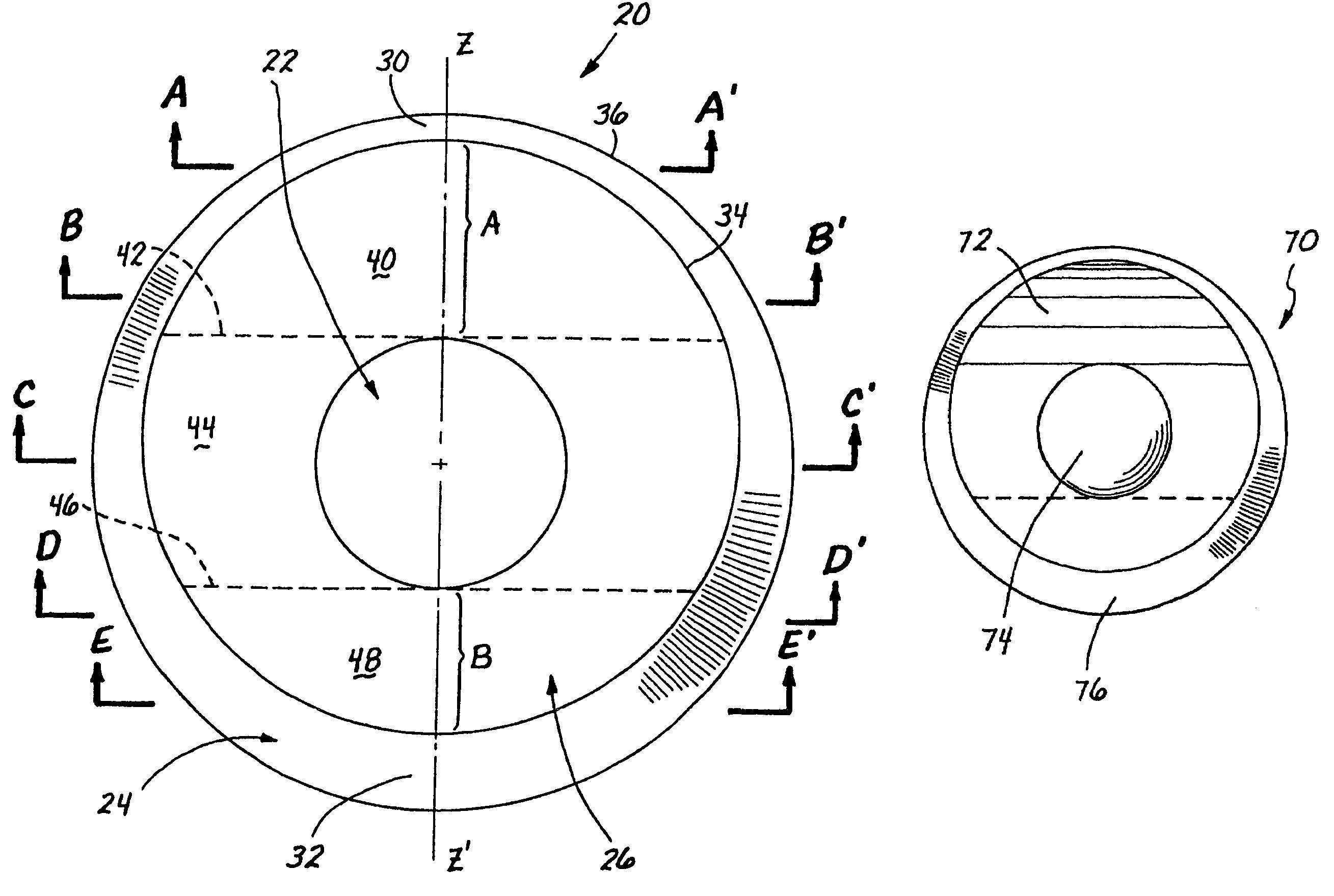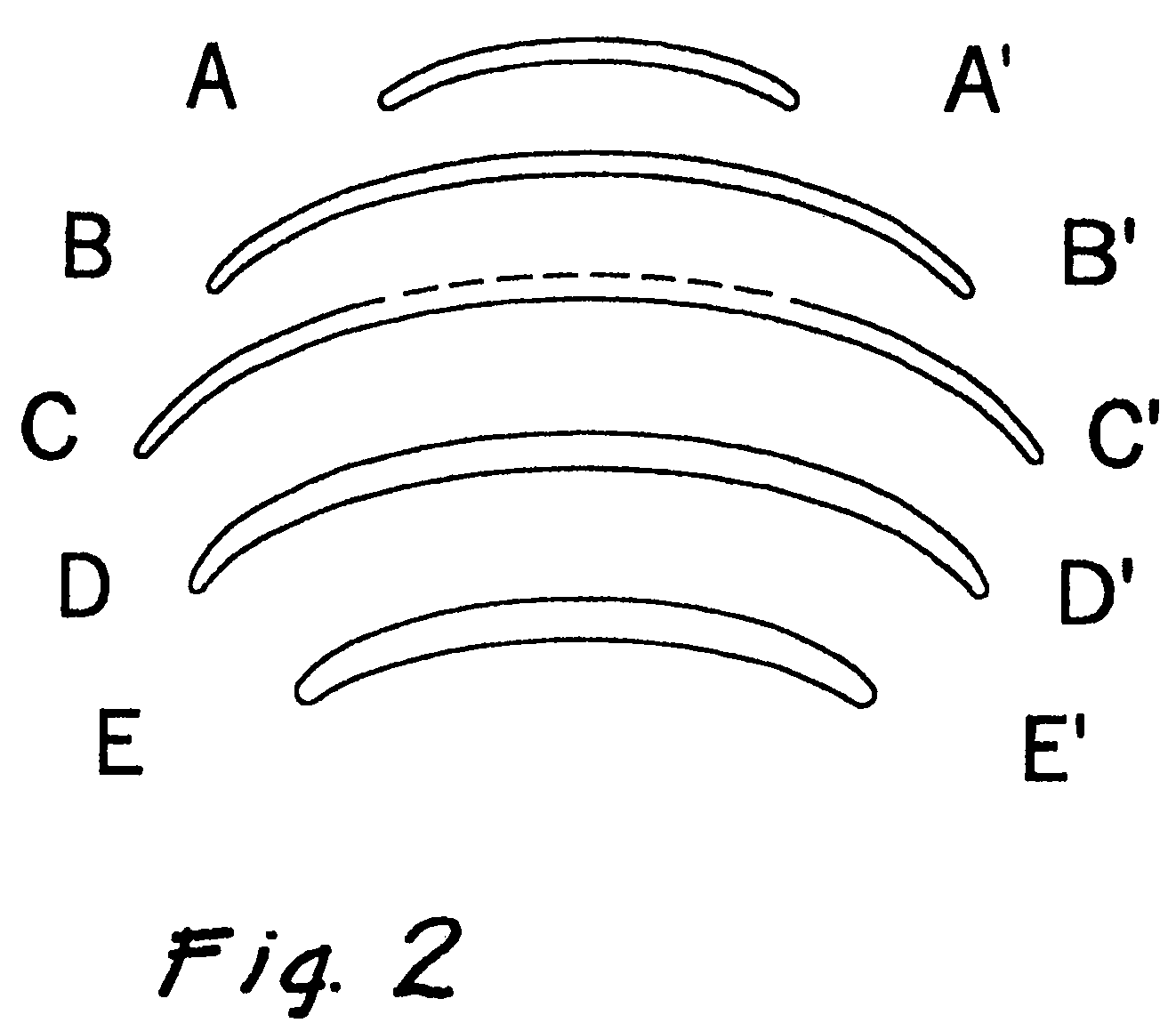Contact lens having a uniform horizontal thickness profile
a contact lens and horizontal thickness technology, applied in the field of contact lenses, can solve the problems of insufficient interaction with the contact lens, high variable orientation and/or discomfort, and undesired interaction
- Summary
- Abstract
- Description
- Claims
- Application Information
AI Technical Summary
Benefits of technology
Problems solved by technology
Method used
Image
Examples
Embodiment Construction
[0048]The present invention provides stabilized contact lenses, especially contact lenses having a cylindrical correction for astigmatism. More broadly, the present invention provides contact lenses having elevated surfaces thereon that interact with the blinking action of the eyelids to rotationally stabilize the lens. The rotational stability is useful for any contact lens that is non-axi-symmetric. For example, the rotational orientation of toric lenses or multifocal lenses must be maintained for proper correction. It should be understood, however, that rotational stability may also be desirable for other specialized lenses.
[0049]In the following description, a number of surfaces and thicknesses of the contact lenses of the present invention will be described with reference to schematic elevational views of the lenses, in that the lenses have been flattened. Contact lenses typically possess an underlying spherical curvature, with the anterior face being convex, and the posterior ...
PUM
 Login to View More
Login to View More Abstract
Description
Claims
Application Information
 Login to View More
Login to View More - R&D
- Intellectual Property
- Life Sciences
- Materials
- Tech Scout
- Unparalleled Data Quality
- Higher Quality Content
- 60% Fewer Hallucinations
Browse by: Latest US Patents, China's latest patents, Technical Efficacy Thesaurus, Application Domain, Technology Topic, Popular Technical Reports.
© 2025 PatSnap. All rights reserved.Legal|Privacy policy|Modern Slavery Act Transparency Statement|Sitemap|About US| Contact US: help@patsnap.com



